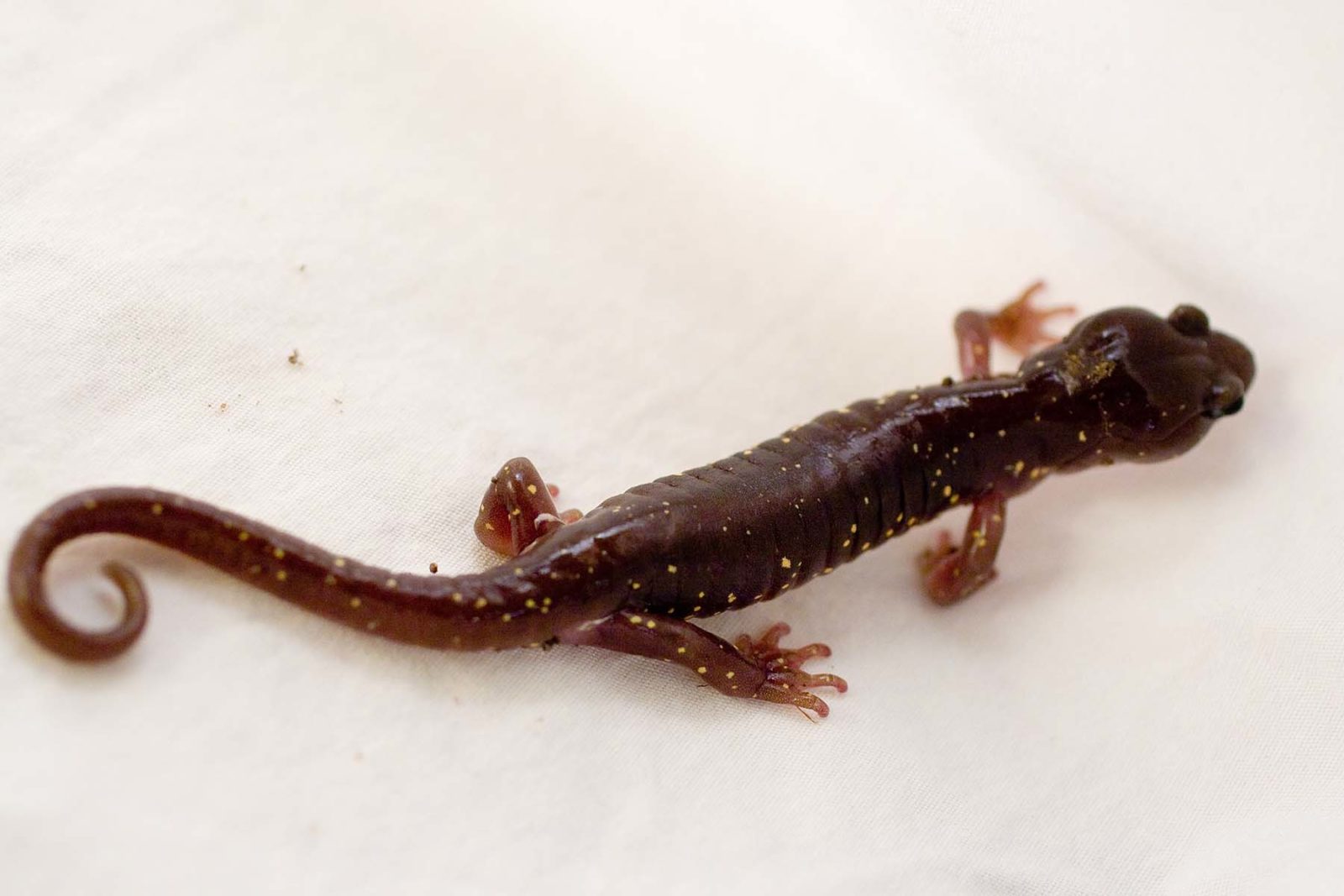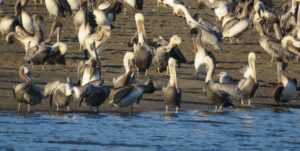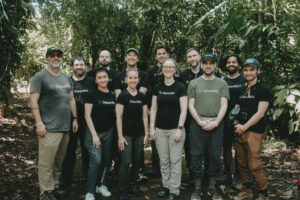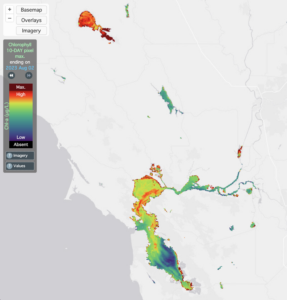Imagine someone in your neighborhood buys a salamander for a pet – not a completely unlikely scenario in a country that imports more than 3.5 million amphibians every year. Salamanders are cute, small, and interesting pets, although they require specialized care. They’re appropriate for small living situations and a Covid-reduced world.
Every so often, however, one of those salamanders has a fungal pathogen. An owner might not know that the animal is infected if it’s without symptoms, or pre-symptomatic. But as everyone on Earth knows now, asymptomatic and pre-symptomatic carriers can spread a lot of disease. The salamander owner in your neighborhood could unwittingly release a diseased pet, or even just throw infected pet water in the yard. Something like this, scientists say, is just what has happened recently in California.
Batrachochytrium dendrobatidis, or Bd, is a chytrid fungal pathogen – a dangerous skin fungus that spreads easily. It has now been found in two California native salamander species, a team of scientists wrote in late November in an article in the journal Frontiers in Veterinary Medicine. The pathogen, which causes lesions, disrupted skin functions, lethargy, loss of appetite, and eventually death, is as fatal as it is hardy.
And its victims, amphibians, are not as hardy as they’d need to be to do well in a changing world. Twenty-five percent of the world’s species reside in the United States, of which more than 40 percent are already threatened with extinction. Amphibians absorb water through their skin, making them very susceptible to environmental changes in temperature or water chemistry. Strangely, Bd has the potential to infect not just one species but most salamander species, and at least some frogs.
“We have one single species [of fungus] that is able to infect over 1,000 species of hosts,” said Vance Vredenburg, a professor at San Francisco State University and one of the authors of the new paper. “That’s pretty unusual, and it’s probably led to the extinction of several hundred species of hosts.”
The researchers reported finding Bd in the arboreal salamander and the Santa Lucia Mountains slender salamander. Because the fungus has such a wide range of potential hosts, it has the potential to affect any Bay Area salamander species, including the endangered California tiger salamander and the Santa Cruz long-toed salamander.
The problem with salamanders is that they’re much more difficult to study because they’re more hidden, they don’t make noise so they’re hard to find, but they’re all over the place.
The issue of potentially spreading a fungus through the pet trade isn’t new. In 2015, the Center for Biological Diversity petitioned for a moratorium on the import of salamanders to protect native species from a related fungus called Bsal. Fish and Wildlife then listed 201 species as “potentially injurious” in 2016, reducing imports by 98.4 percent. The Pet Industry Joint Advisory Council supported the ban. A 2017 study found no Bsal in tested salamanders in the United States.
When it comes to the comparable Bd, it’s hard to know what other species are affected, and how severely, as so many hide beyond the perception of herpetologists.
“The problem with salamanders is that they’re much more difficult to study because they’re more hidden, they don’t make noise so they’re hard to find, but they’re all over the place,” Vrendenberg said. “They live these more fossorial lives, they’re not out as much as the frogs are.”
While the current moratorium bans the import of 201 species of Asian salamanders due to the potential to spread Bsal, the risk of disease spreading is so pressing that Center for Biological Diversity Senior Scientist Tiffany Yap said she believes all species of amphibian should be carefully documented and proven pathogen-free before entering the country, or banned.
“Ideally wildlife trade is banned because then we don’t have animals taken from their native habitat and bringing in disease,” Yap said. “But a ‘clean trade program’ would put some limitations on such trade. If amphibians are brought into the U.S. then they need to be tested for disease and it needs to be proven that they are free of Bd and Bsal.”
Yap said that some salamanders will come into the country without specific labeling: the package just says “amphibian.”
In an email, a spokesperson from the Pet Industry Joint Advisory Council stated that the trade organization also supports “wildlife trade moratoriums in situations such as the fungus recently discovered in two native California salamander species—but only until a clean trade can be established. The responsible pet care community continuously engages in research to prevent and treat health conditions in the animals that journey through the trade and bans that provide for permanent elimination over developing solutions are counter-productive and discourage this type of proactive investment.”
The USGS calls salamanders “vital to ecosystem health,” for their role in controlling insect populations, and for being meals for other animals higher in the food chain. A USGS map of risk to native salamanders of Bsal shows that the risk to salamanders in the United States is especially severe in parts of the Southeast, New York, and the California coast, including the Bay Area.
Yap and Vredenburg note that the destruction of amphibians is both ecologically devastating and tragic. Entire ponds have had their populations wiped out, to be filled with frog carcasses.
“The added stressor of this disease really puts a number on them,” Yap said. “It would be really great if we could get increased biosecurity to help out the native species that are still around.”





